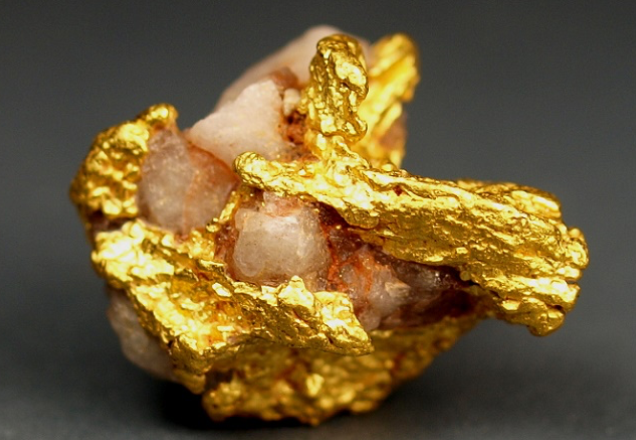
New South Wales has been the most profitable gold producing state in Australia, and some amazing, record-breaking nuggets have been recovered there.
The first official discovery of gold occurred in New South Wales. An assistant surveyor by the name of James McBrien was surveying a road along the north side of the Fish River between Bathurst and Rydal, where he found gold flakes. Although some other minor discoveries were made, several decades passed before any serious mining began.
Also Read: The World’s Largest Gold Nugget Discoveries
In February of 1851, the first profitable gold discoveries were made near Bathurst near Ophir. Edward Hammond Hargraves had spent time in the California goldfields, and he believed that there existed geological similarities between this goldfields of California that he had recently returned from. At a waterhole at Lewis Ponds Creek he did indeed find gold, thus proving his theory.
John Hardman Lister and brothers James and William Tom joined Hargraves and found more gold while prospecting along the Macquarie River. At the confluence of Summer Hills Creek and Lewis Ponds Creek, using a rocker box in the Fitzroy Bar, they discovered a nugget weighing 14 grams. A 55 gram nugget was recovered there as well, along with a total of 113 grams of gold. William Tom’s father named the area Ophir. The rush was on!
Since the best place to look for gold is someplace where it has already been found, the following are areas where significant amounts of gold have been recovered in the past.
Bell’s Point: gold was recovered along the Bell river and its tributaries.
Braidwood: Major’s Creek, Bell’s Creek and the Mongarlowe River all yielded a significant amount of gold. The mines in the area were primarily located along Araluen Creek, which is a tributary of the Deua River, in St. Vincent County, approximately 16 miles from the town of Braidwood.
Bungonia: in Argyle County, mines were located along the Shoalhaven River in the coastal area of Goulbum Mulwaree.
Carraway Hut Cattle Station: although not mined as heavily as other areas, the areas around Lake George, Flat and Black Swamps in Murray County did produce some gold.
Hanging Rock: a Dungowan Creek, which is a tributary of the Peel River, has a small creek flowing into it below the Hanging Rock in the Liverpool Range that has evidence of diggings.
Louisa Creek: Louisa Creek, located 30 miles from Mudgee, is very marsy, but does have a lot of quartz boulders.
Also Read: 5 Popular Gold Prospecting Techniques
Major’s Creek: in the past, 2-3 ounces of gold each day were reportedly found in area around Shoalhaven River.
Monaro – more recently, the Snowy River and tributaries are beginning to look promising.
Meroo (World’s End): South of Mudgee, Meroo Creek yielded gold in alluvial deposits. Although no gold is found in the clay, gold in quartz was found, as well as nuggets up to 4 ounces, and fine dust.
Mookerra: although the creek, which is a tributary of the Macquarie River in yields gold, it is generally dry, so ores must be carried a long way to wash out the gold.
Moruya: along the banks of the Moruya River.
Oakey Creek: along the banks of the creeks in the Liverpool Plains.
Ophir: this is the richest gold bearing region in New South Wales, with diggings at Summer Hill Creek, Lewis Ponds and Frederick’s Valley reported nuggets up to walnut sized. There are many quartz veins in this area.
Parshish: 50 miles south of Bathurst, diggings located around the Abercombie River.
Tuena: profitable operations located 60 miles from Goulburn.
Turon: at this time, this area is the primary goldfield in New South Wales, with productive areas along the Turon River and tributaries Little Oakey Creek and Cunningham’s Creek.
Next: What is the Best Metal Detector for Finding Gold Nuggets?
